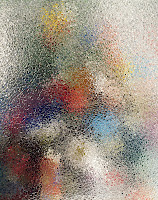Thursday entry: The formula of feeling
I found a book based on patterns in design and architecture where I discovered the ceramic work of Hella Jongerius. A member of the Dutch design collective, Droog, she produced a series of plates containing wild animals blanketed in mostly floral patterns. It is a combination of nature and contemporary design that allows the work to function in multiple ways. Aside from being a spectacle, a narrative is created with each individual figure, encouraging the viewers to contribute their own stories. The chapter went on to discuss the difference between art and ornamentation, and how they are directed towards different circles but equally share the purpose of allowing people to feel comfortable and excited about their environment.
“Art in the 20th century was never affected by the verdict against patterns and ornamentation to the same extent as architecture or design. Nevertheless, it could not risk intruding into the realm of the useful and concrete; their task remained the reflection of perception, their particular territory the space of illusion.” (9 Schmidt)
Max Bill, who was the co-founder of Concrete Art, addressed an amalgamation of mathematical processes and the use of patterns in painting. He also believed in the construction of a “pure gaze.” Bill analyzes, “In a picture of Klee or one of Brancusi’s sculptures we discover though the ‘subject’ may be an indeterminable echo of something or other in the actual world about us, it is an echo which has been transmuted in a form that is original in the sense of being elemental.” I sense a strange allure that is linked to the topic of human perception, and the fact that artists who have worked from abstractionism have produced books and essays about this formula of discovery, in an attempt to package the intangible, continues to amaze me, because human perception is anything but reliable or consistent. In my own work, there are certain patterns that have formed in my process which continue to yield new results. I think that the actions, the physical act of producing, does not change as exponentially as the revelation of meaning.
http://hebert.kitp.ucsb.edu/studio/a-m/mb-maica.html
“Art in the 20th century was never affected by the verdict against patterns and ornamentation to the same extent as architecture or design. Nevertheless, it could not risk intruding into the realm of the useful and concrete; their task remained the reflection of perception, their particular territory the space of illusion.” (9 Schmidt)
Max Bill, who was the co-founder of Concrete Art, addressed an amalgamation of mathematical processes and the use of patterns in painting. He also believed in the construction of a “pure gaze.” Bill analyzes, “In a picture of Klee or one of Brancusi’s sculptures we discover though the ‘subject’ may be an indeterminable echo of something or other in the actual world about us, it is an echo which has been transmuted in a form that is original in the sense of being elemental.” I sense a strange allure that is linked to the topic of human perception, and the fact that artists who have worked from abstractionism have produced books and essays about this formula of discovery, in an attempt to package the intangible, continues to amaze me, because human perception is anything but reliable or consistent. In my own work, there are certain patterns that have formed in my process which continue to yield new results. I think that the actions, the physical act of producing, does not change as exponentially as the revelation of meaning.
http://hebert.kitp.ucsb.edu/studio/a-m/mb-maica.html

Comments
Post a Comment